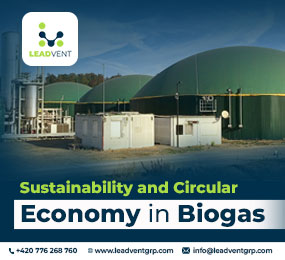As the world accelerates its transition toward clean and sustainable energy, bio methane gas has emerged as a valuable resource with the potential to reshape the global energy economy. Derived from organic waste and agricultural residues, bio methane gas offers a renewable and low-carbon alternative to fossil fuels. With governments, corporations, and climate advocates prioritizing decarbonization, an economic analysis of bio methane gas is not just timely—but essential.
This blog explores the economic viability of bio methane gas by evaluating its production costs, infrastructure needs, market benefits, and long-term value. As highlighted in the upcoming Green Energy Summit 2025, understanding these factors is crucial for stakeholders aiming to invest in the future of green energy.
What Is Bio Methane Gas?
Bio methane gas is a purified form of biogas, primarily composed of methane, which is generated through the anaerobic digestion of organic materials such as agricultural waste, food scraps, and sewage sludge. Once upgraded to match the quality of natural gas, it can be injected into the gas grid, used as vehicle fuel, or supply energy to industrial operations.
Unlike fossil-based natural gas, bio methane gas is renewable and carbon-neutral when produced sustainably. Its versatility and compatibility with existing gas infrastructure make it an ideal candidate for the global green transition.
Cost Structure of Bio Methane Gas Production
Understanding the economics of bio methane gas begins with an analysis of its cost components. While the operational model varies by region and technology, typical cost elements include:
1. Feedstock Acquisition
- Low-cost advantage: Feedstocks such as manure, food waste, or municipal solid waste are often available at minimal or even negative costs due to disposal subsidies.
- Challenge: Ensuring consistent feedstock quality and volume adds complexity to logistics and operations.
2. Anaerobic Digestion and Upgrading Technology
- Capital expenditure (CAPEX) for anaerobic digesters and upgrading units (removal of CO? and contaminants) can be significant—ranging from $3 to $6 million for medium-scale plants.
- Operational expenses (OPEX) include maintenance, energy inputs, labor, and monitoring systems.
3. Distribution Infrastructure
- Upgraded bio methane gas can be injected into existing gas grids, reducing the need for new infrastructure.
- However, in regions lacking grid access, setting up standalone refueling or storage stations can add to capital costs.
4. Compliance and Certification
- Costs may include sustainability certification (e.g., RED II in the EU) and emission monitoring to qualify for green energy incentives or carbon credits.
While upfront costs are higher than those of fossil fuels, supportive policies, subsidies, and long-term operational efficiency are helping narrow the gap.
Market Benefits and Revenue Streams
The Green Energy Summit 2025 underscores how bio methane gas can unlock multiple economic benefits across sectors. These include:
1. Energy Sales and Grid Injection
- Bio methane gas can be sold as pipeline-quality gas or compressed natural gas (CNG), earning stable revenue from energy markets.
- In countries with feed-in tariffs or Renewable Gas Obligations, producers receive premium rates.
2. Carbon Credit Revenue
- Certified bio methane projects may generate carbon credits or renewable energy certificates (RECs), which can be monetized through trading platforms or carbon offset markets.
3. Waste Management Savings
- Municipalities and agricultural sectors can reduce costs associated with landfill use and wastewater treatment by converting waste into fuel.
4. Fertilizer Byproducts
- The digestate from bio methane production can be processed and sold as organic fertilizer, adding another revenue stream.
Economic and Environmental Synergies
The value of bio methane gas goes beyond its direct monetary benefits. It contributes to a circular economy by turning waste into energy and promoting environmental stewardship. Here's how the economic and environmental gains intersect:
- Rural Development: Decentralized bio methane plants create local jobs and offer additional income for farmers and cooperatives.
- Energy Security: Reducing reliance on imported fossil fuels strengthens national energy independence and price stability.
- GHG Reduction: Avoiding methane emissions from landfills and manure lagoons results in substantial climate benefits.
- A comprehensive economic analysis reveals that bio methane gas isn't just a renewable alternative—it’s a profitable one when integrated smartly within existing systems.
Comparing Bio Methane Gas with Other Energy Sources
| Energy Source | CAPEX | OPEX | Emissions | Policy Support |
| Bio Methane Gas | High | Moderate | Very Low | Strong in EU/US |
| Fossil Natural Gas | Medium | Low | High | Declining globally |
| Solar PV | Low-High | Very Low | None | High incentives |
| Hydrogen (Green) | Very High | Moderate | None | Growing, but nascent |
While solar and wind dominate the electricity sector, bio methane gas shines in decarbonizing transport, heating, and industrial fuel applications, where electrification is less feasible.
The Future Outlook: Bio Methane Gas in 2030 and Beyond
The global bio methane market is expected to grow at a compound annual growth rate (CAGR) of over 7% through 2030. Nations like Germany, France, India, and the U.S. are expanding biogas upgrading infrastructure, while emerging markets in Africa and Southeast Asia are exploring localized solutions.
With climate targets tightening and fossil subsidies waning, bio methane gas will likely play a pivotal role in national energy mixes. As discussed in the Green Energy Summit 2025, aligning investment strategies with sustainability goals is key to maximizing the economic value of this green fuel.
Conclusion
Bio methane gas is no longer just a niche renewable solution—it's a scalable, sustainable, and economically viable energy option. Despite its relatively high upfront costs, the long-term benefits in terms of energy diversification, waste reduction, and emissions mitigation offer compelling value.
For governments, industries, and investors attending the Green Energy Summit 2025, the message is clear: investing in bio methane gas today lays the foundation for a circular, profitable, and greener economy tomorrow.








